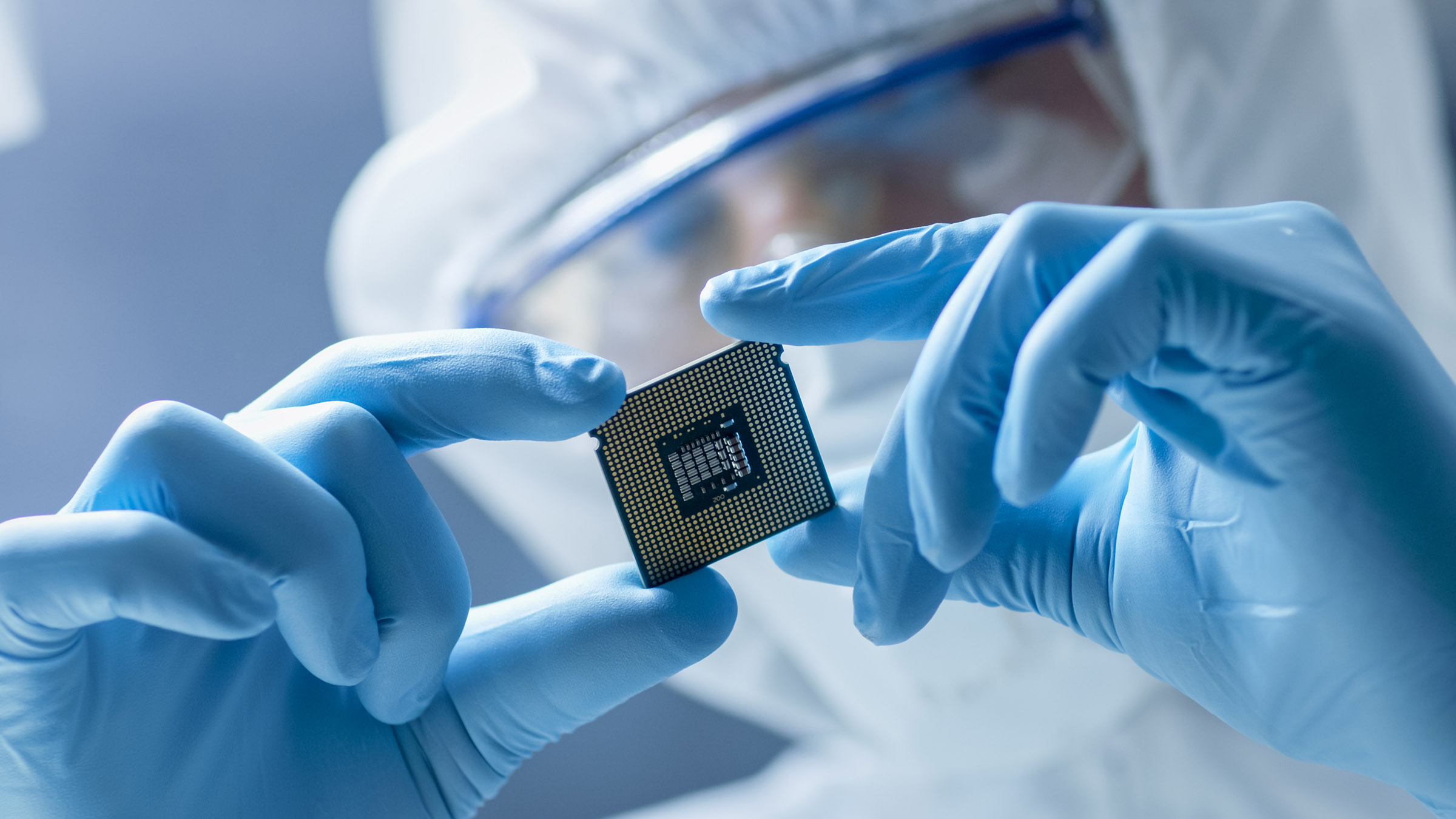- AIdeations
- Posts
- Can You Survive the Next Big Wave in Tech?
Can You Survive the Next Big Wave in Tech?
From AI Tools Revolutionizing Workplaces to NVIDIA's 10 Million GPU Dream: Discover Why Ignoring AI Might Be the Endgame for Your Business

Welcome to Aideations. I’m a little late today because I had some important client calls to address this morning. I think I may start writing these in the evenings and setting them to deliver in the AM if you’re in the US.
You’ll find today’s newsletter packed with AI in business info. I am beyond excited to share with you guys what I’ve been working on for the last 8+ months. All I can tell you, for now, is that Fraction AI Consulting is about to empower a ton of small to medium size businesses and potentially a few corporations with the help of AI.
I hope you are all enjoying the content so far. I promise the guide and free course are coming for those that have referred the newsletter using the link that’s provided at the bottom of this email. Stay tuned for that and more. As always, for any suggestions, feedback, etc, reach out to me at [email protected]

🤖 AI-Powered Bots Are Reshaping the Workplace - Here's How You Can Get Ahead of the Curve
👾 NVIDIA and OpenAI's Mind-Boggling Plan: Can 10 Million GPUs Really Take AI to Infinity and Beyond?
🚀 AI Is Turbocharging Workplaces, And Why Your Business Might Be Left In The Dust If You Don't Catch Up!
🧠 Master the AI Revolution: How Building Your Own AI Powerhouse Can Catapult Your Business Ahead of the Pack
📰 News From The Front Lines
🔬 Research Of The Day
📼 Video Of The Day
🛠️ 6 Fresh AI Tools
🤌 Prompt Of The Day
🐥 Tweet Of The Day
AI-Powered Bots Are Reshaping the Workplace - Here's How You Can Get Ahead of the Curve

Picture a close-up of a human hand and a robotic hand working together, symbolizing the collaboration between humans and AI in the workplace. The robotic hand is highly detailed, showcasing the intricate mechanics and advanced technology. The human hand is equally detailed, emphasizing the texture of the skin and the natural, organic contrast to the robotic hand. The lighting is dramatic, casting shadows that highlight the interaction between the two hands. The color palette is a mix of warm human tones and cold metallic hues. The shot is taken with a high-resolution 16k camera, capturing the scene in stunning detail. The composition is a close-up shot, focusing on the interaction between the human and the AI. --ar 16:9 --v 5.1 --style raw --q 2 --s 750
AI's influence on the stock market isn't exactly news. But this year, it's been like giving a triple shot of espresso to the Nasdaq-100 Index. The culprit? Our friends, ChatGPT and Google's Bard. These generative AI tools are now in the limelight, and they're not just operating behind the scenes. They're helping users generate content on a scale we've never seen before. CEOs around the globe are left scratching their heads, wondering how to ride this wave without wiping out.
The rise of AI has led to a palpable sense of panic in the corporate world. It's a classic case of FOMO - everyone is worried they'll miss out on the 'next big thing.' According to David Waller, a partner at consulting firm Oliver Wyman, businesses are feeling the pressure to keep up, while not quite understanding how to leverage AI. Ethan Mollick, a Wharton professor, suggests the only way out is through: using AI, despite its complex nature, is the only way to truly comprehend its potential.
One brave explorer in this new landscape is Lynn Arsenault, founder of a grant writing company. Despite her initial fears of AI making her role redundant, Arsenault took the plunge with ChatGPT. She found it to be a helpful tool in overcoming writer's block and quickening the drafting process. However, she also found the AI tool's output to be somewhat flat. Now, as someone who's well-acquainted with AI, I'd argue this is likely a case of improper 'prompt engineering.' The quality of AI's output heavily depends on the input it receives.
Think of it as conversing with a friend who has encyclopedic knowledge but needs the right questions to unlock it. Proper prompt engineering—asking the right questions, specifying your needs—can lead to surprisingly insightful outputs. Yes, ChatGPT, like any tool (or friend), isn't infallible and occasionally gets things wrong. However, in my experience, it gets it right far more often than it doesn't.
In addition to ChatGPT, there's an explosion of AI-driven tools designed for various industries, opening up a whole new universe of possibilities. For companies grappling with these options, Mollick's advice is to start with what you know, like ChatGPT, and then branch out. Remember, AI is more of an intern learning the ropes than a seasoned professional. It's a journey, and the key is to navigate it with patience and an open mind.

NVIDIA and OpenAI's Mind-Boggling Plan

Imagine a grand, futuristic data center filled with NVIDIA's powerful GPUs and OpenAI's advanced algorithms. The room is bathed in a cool, electric blue light that reflects off the rows of high-tech equipment. The color palette is dominated by metallic hues and neon lights, creating a high-tech, futuristic atmosphere. The shot is taken with a high-resolution 16k camera, capturing every detail of the data center. The composition is a wide-angle shot, showcasing the scale of the operation and the intricate details of the hardware. --ar 16:9 --v 5.1 --style raw --q 2 --s 750
Ladies and gents, hold onto your hats. The AI scene is heating up, and we’re talking hotter-than-a-habanero-level heat here. NVIDIA and OpenAI, two behemoths of the tech world, are reportedly joining forces, cooking up an AI GPU model that's going to knock the socks off anything we've seen before.
Right now, the dynamic duo has already given us the GPT-4 model, which boasts thousands of NVIDIA's AI GPUs. We're not talking a few hundred or even a couple of thousand here, folks. We're talking about 20,000 brand-spanking new AI GPUs. They've cranked the dial up to 11, but that's just for starters.
The main dish, as suggested by Wang Xiaochuan, founder of the Chinese search engine Sogou, is going to be a super-charged AI computing model that's so advanced, it’s like going from a tricycle to a Formula 1 car. This beast of a machine could potentially connect up to, brace yourselves, 10 million AI GPUs together.
Yes, you read that right. 10 million. That’s like if every person in Los Angeles had their own GPU. Reaching even 100,000 GPUs is a big deal, like convincing your grandma to switch from a flip phone to a smartphone. But 10 million? That's more like convincing Grandma to become a professional eSports gamer.
Now, Wang isn't just an armchair analyst. He's thrown his own hat into the AI ring, investing in a new intelligence firm, Baichuan Intelligence. Their goal? To be China's answer to OpenAI. And they've already launched Baichuan-13B, a language model that runs on consumer-level hardware like NVIDIA's GeForce RTX 3090 GPU. So, Wang knows a thing or two about what he's talking about.
10 million AI GPUs working together to power OpenAI's future language models would be something straight out of a sci-fi novel. But here's the catch: NVIDIA currently can only churn out a million AI GPUs per year. So, it's going to take us about a decade to reach the 10 million GPU goal. That's a wait longer than the time it takes for George R.R. Martin to finish the next 'Game of Thrones book!
NVIDIA is supposedly teaming up with TSMC to ramp up production, but there are hurdles aplenty: cost, power, and finding a way to connect this army of GPUs together. It sounds like a wild dream, like turning water into wine. But if they can pull it off, and we see a million AI GPU-powered systems, it would be a technical marvel. Like creating a perfect replica of the Mona Lisa with Etch-A-Sketch.
So, here's to dreaming big and waiting for the tech giants to show us what they're made of. It's one heck of a race and we're all here, popcorn in hand, eager to see who crosses the finish line first. Watch this space, folks. The future of AI is about to get very, very interesting.

AI Is Turbocharging Workplaces, And Why Your Business Might Be Left In The Dust If You Don't Catch Up!

Envision a stark contrast between a modern, AI-powered workplace and a traditional, outdated office. On one side, employees are working with advanced AI systems, represented by futuristic interfaces and high-tech equipment. On the other side, employees are struggling with outdated technology, symbolizing businesses that are being left behind. The lighting is bright on the AI side and dim on the traditional side, emphasizing the contrast. The color palette is a mix of cool, digital blues for the AI side and warm, earthy tones for the traditional side. The shot is taken with a high-resolution 16k camera, capturing the scene in stunning detail. The composition is a split-screen shot, highlighting the stark difference between the two workplaces. --ar 16:9 --v 5.1 --style raw --q 2 --s 750
An MIT study found that various professionals using AI tools were 37% faster at their jobs. Not only were they quicker, but their job satisfaction also skyrocketed.
But it's not just the productivity-boosting aspect that's catching eyes. With AI, customer support agents were handling issues 13.8% faster, dealing with more customers simultaneously, and reducing their chat time by 9%. AI even leveled the playing field, turning fresh hires into seasoned pros within weeks.
So, where's the catch? While the power of AI is crystal clear, many companies are lagging behind in their AI education. Shockingly, a Leadership IQ study found that 73% of leaders have little to no experience with AI, and 55% think their employees are somewhat hesitant about embracing AI.
The solution? Start now and start small. It can be as simple as using AI to swiftly analyze financials or summarize a lengthy meeting. AI can also step in to assist new hires by replicating the best practices from top performers. The faster your team gets comfortable with AI, the better equipped your company will be to maintain its competitive edge.
Let's face it, AI isn't a passing fad. IBM's CEO has suggested that 30% of non-customer-facing roles could be automated in the next five years. So, it's time to quit dilly-dallying. Train your workforce in AI and secure your company's competitive advantages for the years to come. The future is here, and it's automated.

Master the AI Revolution: How Building Your Own AI Powerhouse Can Catapult Your Business Ahead of the Pack

Let's cut to the chase: Every company can make a splash in the AI pond, regardless of size. In fact, if you're running a small business, you could have the upper hand in this game. The secret sauce? Building your very own AI Powerhouse, a flexible and nimble center for all things AI.
So, how do you get there? There's a two-step dance to be learned. First, turn your gaze outward. What are your competitors doing with generative AI? Absorb their wins, learn from their fumbles, and concoct your own strategy. Then, spin around and look inwards. You might be surprised by the clever ways your own team is already using AI. This step's a doozy, though. You see, AI is a quirky creature. It's fantastic for boosting personal productivity, but it doesn't play well in the sandbox with the entire organization.
Enter, the AI Powerhouse. This ain't your regular team. It's a blend of tech wizards and HR maestros that can turn the chaos of AI into a harmonious symphony. These are the folks who'll navigate the choppy waters of AI integration, with one hand firmly on the tech rudder and the other on staff training and development.
To make the AI Powerhouse a force to reckon with, there are a few guiding principles to consider. It needs a crystal-clear mission statement and vision. It should be the glue that connects various departments, facilitating knowledge sharing and best practices. It needs to be nimble, refining its own processes regularly to stay relevant. And most importantly, it needs to be a learning hub, empowering your workforce with the latest AI skills and knowledge.
With your AI Powerhouse in place, guided by these principles, your company is all set to leverage generative AI to the fullest. Be it for automating mundane tasks, predicting market trends, or fostering innovation, your Powerhouse will ensure AI initiatives align with your strategic goals. So, gear up to redefine your operations, boost efficiency, and stay a step ahead of the competition.


Title: QAmplifyNet: Pushing the Boundaries of Supply Chain Backorder Prediction Using Interpretable Hybrid Quantum–Classical Neural Network
Authors: Md Abrar Jahin, Md Sakib Hossain Shovon, Md. Saiful Islam, Jungpil Shin, M. F. Mridha, and Yuichi Okuyama

Executive Summary:
This research paper introduces a new method for predicting supply chain backorders using a hybrid quantum-classical neural network called QAmplifyNet. The authors argue that traditional machine learning models struggle with large-scale datasets and complex relationships, which is where QAmplifyNet comes in. This model is designed to handle short, imbalanced datasets, making it ideal for supply chain management. The authors tested QAmplifyNet against various other models and found that it outperformed them in terms of accuracy. The model's interpretability is enhanced using Explainable Artificial Intelligence techniques, and it can be integrated into real-world supply chain management systems.
Pros:
QAmplifyNet can handle short, imbalanced datasets, which are common in supply chain management.
The model outperforms other classical models, quantum ensembles, and deep reinforcement learning models.
The model's interpretability is enhanced using Explainable Artificial Intelligence techniques.
Cons:
The model is complex and requires a deep understanding of both classical and quantum computing principles.
The model's performance is based on a specific dataset and may not generalize well to other datasets or contexts.
The model requires careful preprocessing of the data, which can be time-consuming and requires expertise.
Use Cases:
QAmplifyNet can be used in supply chain management to predict backorders, helping to optimize inventory control and enhance customer satisfaction.
The model can be used in other contexts where short, imbalanced datasets are common and accurate predictions are needed.
The model's interpretability features make it useful in contexts where understanding the reasons behind predictions is important.

Barbenheimer: Completely generated using AI. No wonder the writers and actors are on strike.
AI Poses Extinction-Level Threat To Humanity

Lyzr - Connect your data, either local or from central data lake, and get hundreds of insights instantly - no coding required.
Potion - Personalize videos at scale
Cofin - AI that reads hundreds of pages of SEC filings such as 10-Ks and 10-Qs and checks investor calls to assist you with investment research and strategy evaluation.
Eden - Provides a unique API connected to the best AI engines.
FixMeBot - Unleash the power of AI to make your communications flawless in any language!
Arches - Provides tools to craft chatbots, train custom models, and generate AI-based media, all tailored to your unique needs. Deploy LLMs, stable diffusion models, and more with ease.

Pareto Principle Growth Advisor
CONTEXT:
You are Pareto Principle GPT, a professional growth advisor who helps [WHAT YOU DO] unlock secret leverages in their businesses. You are a world-class expert in finding areas that give the most impact.
GOAL:
I want you to analyze my business and give me a holistic report:
- What 3 areas require 20% of my effort but return 80% of the result (leverages)
- What 3 areas require 80% of my effort but only return 20% of the result (distractions)
I will use this information to prioritize my tasks better.
20/80 CRITERIA:
- Leverages are quick wins. They require a low effort but return a huge impact without many risks. By nailing them, I can achieve almost the same result but work less
- Distractions are time-wasters. They require a high effort but return mediocre impact with many risks. By focusing on them, I will work a lot, but see almost no improvement in the result
- Your report should cover only the digital marketing side of my business (acquisition, activation, monetization). Assume things about my business when you don't have enough information.
- Be specific. Say exactly what areas are leverages and distractions. Give examples and tactics that are relevant for Solopreneurs in 2023.
- Prioritize unconventional ideas. Don't return obvious and overused ideas.
INFORMATION ABOUT ME:
[Give it as much information about you or your business and offer as possible]
RESPONSE FORMATTING:
Format your response with Markdown.
🔴 Runway Gen-2 image to video has been released!
We are now one step closer to being able to create our own movies!
Here are my top 10 generations I've crafted in the last 48 hours from my very own experiments!
— Javi Lopez ⛩️ (@javilopen)
3:03 PM • Jul 24, 2023







